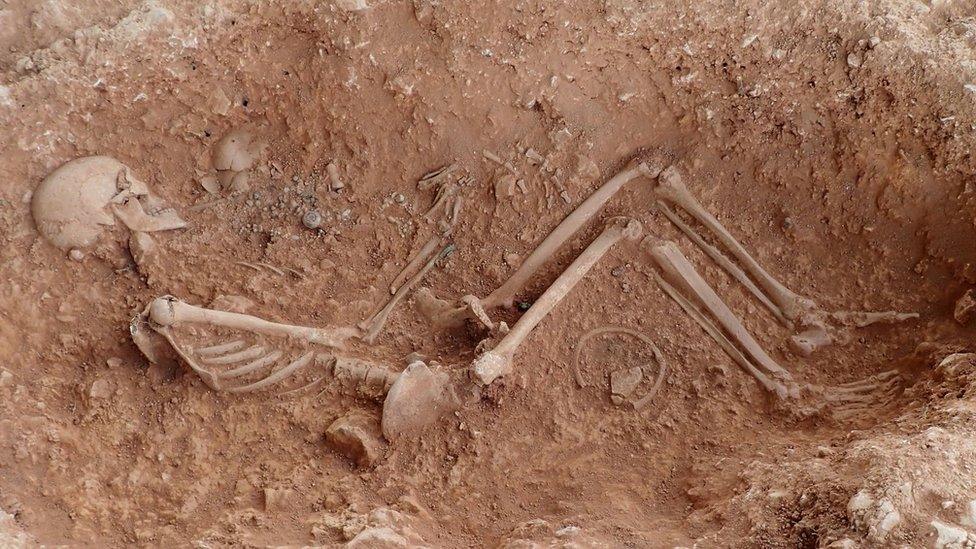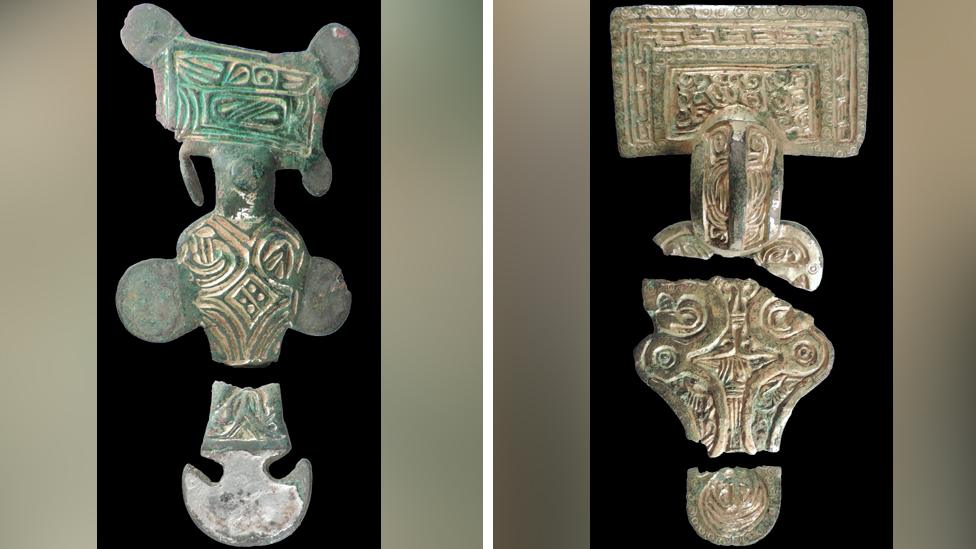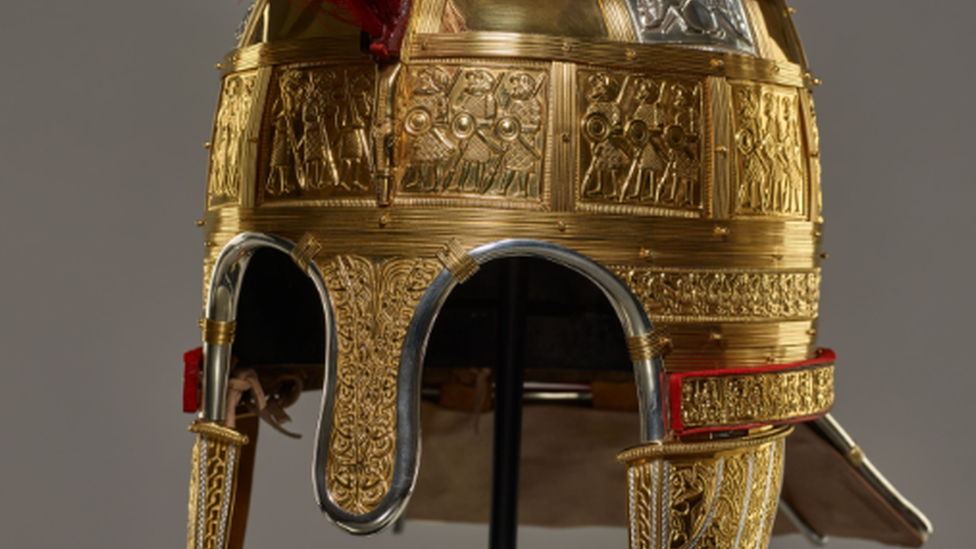Lincolnshire Anglo-Saxon cemetery burials unearthed
- Published

Experts said a "significant proportion of very lavish burials" belonged to women
Burials of richly-dressed women interred with their jewellery and personal items have been unearthed at an Anglo-Saxon cemetery.
About 20 graves dating to the fifth and sixth centuries, including one containing a woman cradling a baby, were found in the Lincolnshire Wolds.
The cemetery was discovered after a metal detectorist uncovered artefacts at the site in Scremby, near Skegness.
Experts said there was a "rich array" including necklaces and brooches.
Copper-gilded brooches, iron shield bosses and Anglo-Saxon spear heads were among the finds made by the metal detectorist.

One of the burials contained a skeleton of a woman cradling a baby in her left arm
Hugh Willmott, a senior lecturer at the University of Sheffield who led the dig, said: "These women wore necklaces made from sometimes hundreds of amber, glass and rock crystal beads, used personal items such as tweezers, carried fabric bags held open by elephant ivory rings, and wore exquisitely decorated brooches to fasten their clothing.
"Two women even received silver finger rings and a style of silver buckle commonly associated with Jutish communities in Kent.
"One of the most striking burials was that of a richly-dressed woman who was buried with a baby cradled in her left arm."
Dr Willmott said a "significant proportion of very lavish burials" belonged to women, while men were buried with "weaponry such as spears and shields".
He said the lavish burials were "in keeping with the funerary rites adopted during the early centuries of the Germanic migrations to eastern England".

These copper gilded brooches were among the artefacts unearthed from the burial site by the metal detectorist
The dig has been the first known excavation at the site and involved members of the RAF, as well as international volunteers and students.
Teeth and bones of those buried are being analysed to identify where the individuals lived and what food they ate.
The ivory rings are also being examined to track which elephant species was used to produce them.
You can see more on this story on BBC Digging For Britain on BBC Four at 21:00 GMT on Wednesday 28 November, and afterwards on the BBC iPlayer.
Related topics
- Published23 November 2018

- Published6 October 2018
